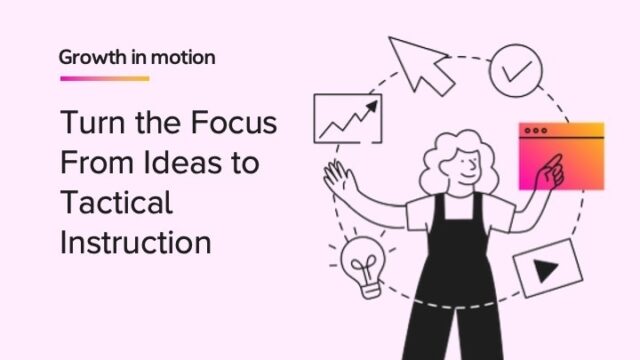
One of the reasons it can be so difficult to get a Positive Behavioral Supports and Interventions (PBIS) initiative off the ground or get buy-in from your staff is the assortment of myths surrounding PBIS. Certain fundamental aspects of PBIS are misunderstood, and this affects the way it’s perceived. This article debunks the most common PBIS criticisms and, in doing so, illustrates why it works.
7 Myths of PBIS
Myth 1: PBIS rewards students for what they should already be doing
When we reward students for good behavior, aren’t we just heaping praise on them for things they should already be doing? That’s certainly one way of looking at it, but then you should also consider how students are supposed to know how they should behave in the first place. Where should they have learned this? Naturally, the answer is from their parents, but in reality, each student’s family does this differently, with varying results.
It would be fantastic if every student came to school already knowing how to behave, just like it would be great if they could all read. The truth is that some parents are more effective at teaching their children how to behave than others. Just like some teach their children to read or count before they enter kindergarten.
By treating good behavior as a skill that can be taught, PBIS evens the playing field. A well-structured PBIS program will help reinforce those behaviors in some students while getting others caught up.
Myth 2: Students are being conditioned to respond to treats
Another concern is that once students start receiving rewards, they’ll only behave well when they stand to receive something in return. People who share this perspective see PBIS rewards as a form of bribery.
This myth stems from a misunderstanding of the rewards that can be offered in a PBIS program. For starters, even the word “treat” is a bit misleading and evokes images of students being offered cookies and pieces of candy in response to their compliance. However, this largely isn’t the case.
Moreover, while some rewards are earned quickly, others take more time. This means that in the time it takes to earn a particularly sought-after reward, students will have repeatedly practiced a certain desirable behavior to the point that it will have become routine for them. Better still, many rewards aren’t for individual students but rather for entire classes, contingent on students demonstrating skills such as teamwork and cooperation.
Myth 3: Incentives are expensive
Many people who believe that students are being conditioned under PBIS also believe that such incentives cost a lot of money and will stretch your school budget.
It’s worth noting that there are tons of incentives that cost absolutely nothing. When it comes down to it, the PBIS rewards you can offer are restricted more by imagination than by money. Fortunately, teachers tend to be a creative bunch!
For other specific rewards that require making a purchase, why not contact local businesses for a little help? If they can’t donate a few freebies, they might be able to offer a significant discount.
Myth 4: PBIS means no discipline
One of the main concerns about PBIS among teachers is that they won’t be able to discipline students under this framework. Many believe that adopting a PBIS program implies a radical change in how they’re expected to go about their profession. However, PBIS isn’t intended to replace disciplinary measures but rather to work alongside them to reduce misbehavior over the long term. The goal is to create an improved school culture where discipline is less of a concern but certainly not a distant memory.
Myth 5: PBIS only works in certain kinds of schools
Those who only know about PBIS in passing might be inclined to think that it only works in certain environments. For example, some believe PBIS only works at the elementary school level because the students are young enough for it to make an impression. Others might think it works best in a middle or high school environment because the students have developed the ability to reflect on their behavior.
However, PBIS is a framework designed to work in as many environments as possible, and there are plenty of case studies to prove this.
Myth 6: It’s a program like any other
Because students are so layered and education can be complex, it often seems like everyone is coming up with a program or initiative to maximize their potential. As a result, more experienced teachers will have seen a variety of them come and go—so, to them, PBIS is just another fad in education. It’s not difficult to see why many teachers are a little cynical.
However, while PBIS is referred to as a program or initiative, it’s more accurate to describe it as a framework. It’s a set of ideas designed to readdress how we view and deal with behavioral issues in schools. Instead of accepting student misbehavior and responding with discipline, we have the time and ability to teach students how to behave well.
Myth 7: PBIS means more work
The same educators who fear that PBIS is overhauling their traditional practices and roles as instructors also fear that PBIS will only create more work for them.
For one, there’s learning about how PBIS works, teaching good behaviors to your students, and then constantly monitoring and analyzing the results.
Now, while getting to grips with your PBIS program and teaching your students how to behave well will certainly take some effort initially, it will quickly even out against the time you save on discipline-related referrals. Let’s not forget, disciplinary procedures also take time and considerable energy to deal with. Merely redirecting that time to educating students about how to best behave can offer an incredible trade-off. Regarding tracking and rewarding behaviors, a lot of that is made easier through online platforms.
Finally, a PBIS program improves a school’s climate: it helps to develop students who are more aware of their behavior and the inherent benefits of behaving well. Their interactions with teaching staff will generally be warmer and more respectful, making the school a more pleasant environment for everyone. In short, a PBIS initiative will make the teacher’s job much easier and, ultimately, more fulfilling.
***
This article was adapted from a blog post initially developed by the education technology company Classcraft, which was acquired by HMH in 2023. The views expressed in this article are those of the author and do not necessarily represent those of HMH.













